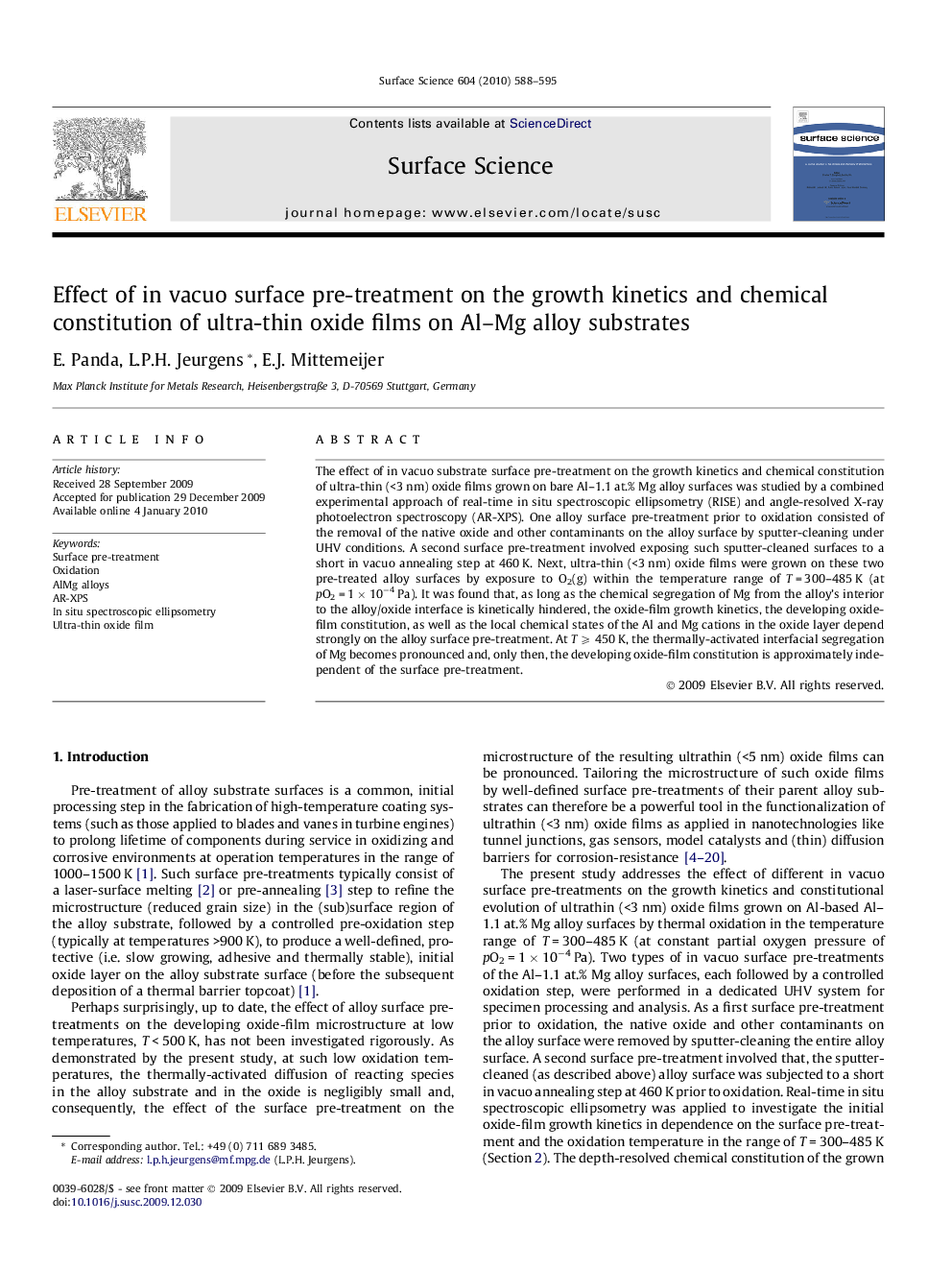| Article ID | Journal | Published Year | Pages | File Type |
|---|---|---|---|---|
| 5423984 | Surface Science | 2010 | 8 Pages |
Abstract
The effect of in vacuo substrate surface pre-treatment on the growth kinetics and chemical constitution of ultra-thin (<3 nm) oxide films grown on bare Al-1.1 at.% Mg alloy surfaces was studied by a combined experimental approach of real-time in situ spectroscopic ellipsometry (RISE) and angle-resolved X-ray photoelectron spectroscopy (AR-XPS). One alloy surface pre-treatment prior to oxidation consisted of the removal of the native oxide and other contaminants on the alloy surface by sputter-cleaning under UHV conditions. A second surface pre-treatment involved exposing such sputter-cleaned surfaces to a short in vacuo annealing step at 460 K. Next, ultra-thin (<3 nm) oxide films were grown on these two pre-treated alloy surfaces by exposure to O2(g) within the temperature range of T = 300-485 K (at pO2 = 1 Ã 10â4 Pa). It was found that, as long as the chemical segregation of Mg from the alloy's interior to the alloy/oxide interface is kinetically hindered, the oxide-film growth kinetics, the developing oxide-film constitution, as well as the local chemical states of the Al and Mg cations in the oxide layer depend strongly on the alloy surface pre-treatment. At T ⩾ 450 K, the thermally-activated interfacial segregation of Mg becomes pronounced and, only then, the developing oxide-film constitution is approximately independent of the surface pre-treatment.
Related Topics
Physical Sciences and Engineering
Chemistry
Physical and Theoretical Chemistry
Authors
E. Panda, L.P.H. Jeurgens, E.J. Mittemeijer,
